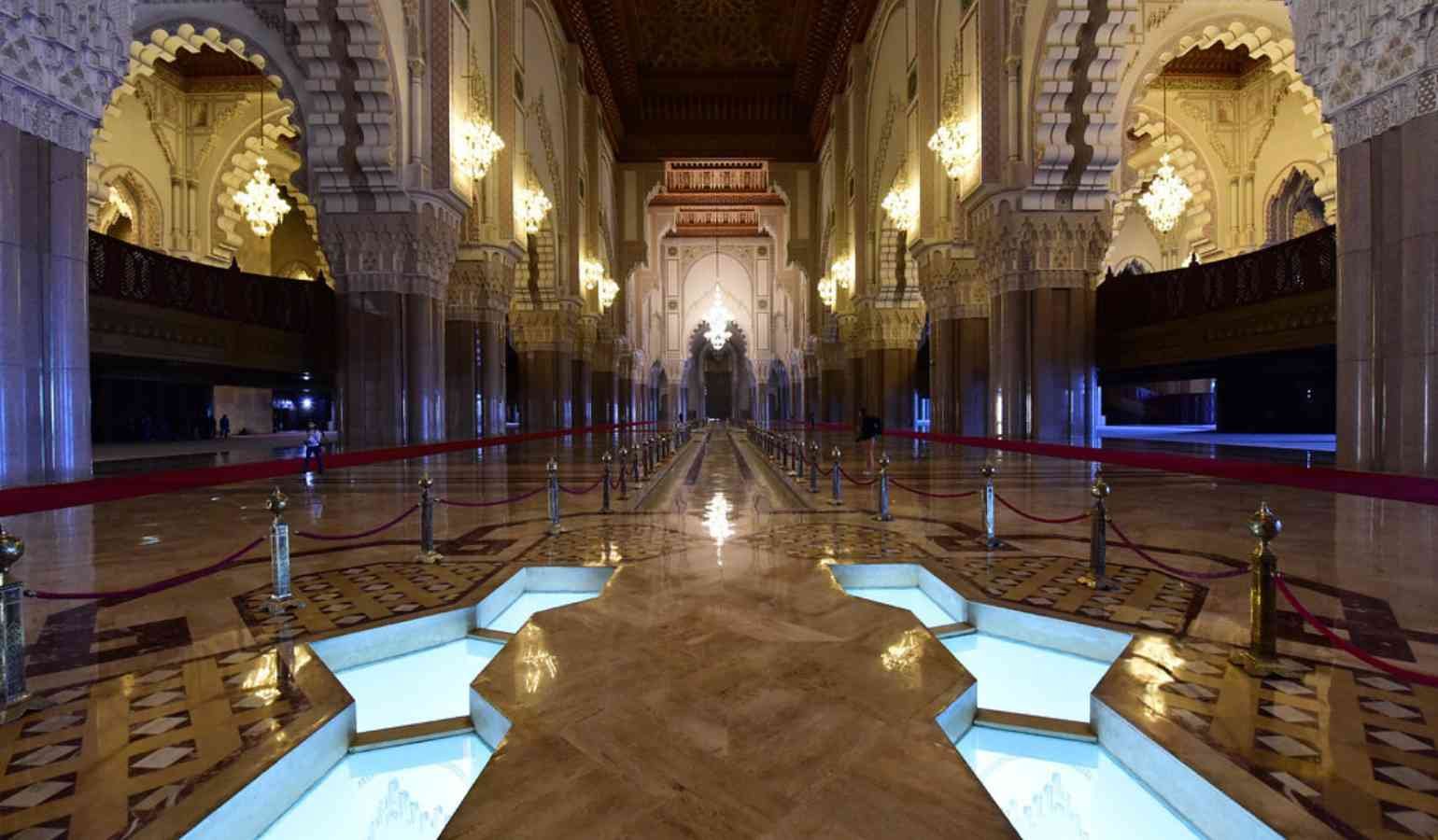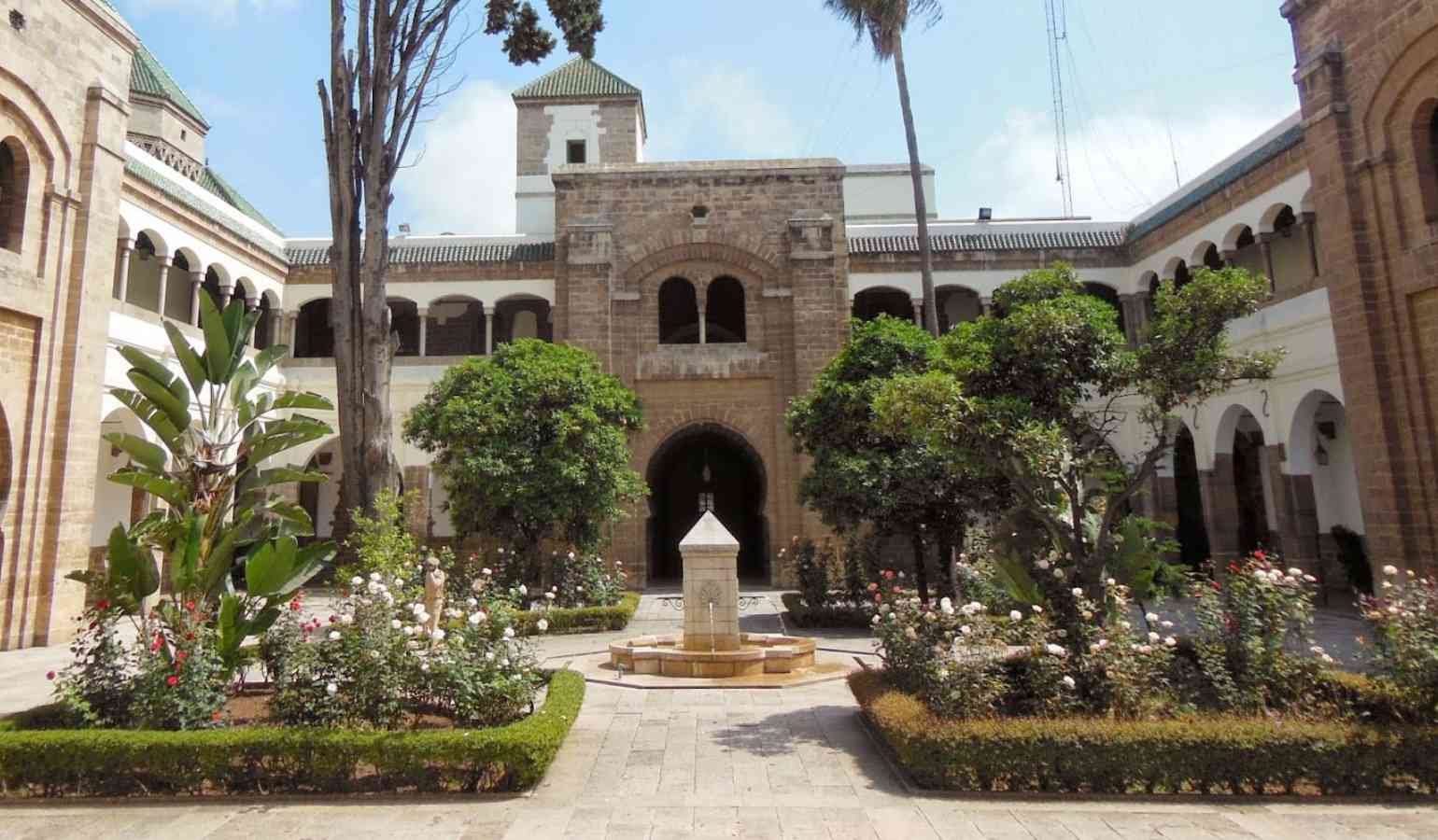In the bustling heart of Casablanca, two iconic squares stand as enduring symbols of the city’s rich history and its evolution into a modern metropolis: Place des Nations Unies and Place Mohammed V. These public spaces are more than just meeting points; they are historical landmarks that reflect the city’s colonial past, its journey to independence, and its emergence as Morocco’s economic and cultural capital.
Place des Nations Unies, A Gateway to Casablanca’s Past and Present
Place des Nations Unies, known in English as United Nations Square, is one of Casablanca’s most famous and historically significant public spaces. Situated at the crossroads of the old medina and the modern city, this square serves as a symbolic gateway, connecting the traditional and contemporary aspects of Casablanca.
Colonial Beginnings: The square was originally established during the French Protectorate in the early 20th century as a central hub of the new European-style city that was being developed. It was initially called Place de France and was designed to be the heart of the city’s modern infrastructure, surrounded by wide boulevards, shops, and cafes.
Architectural Landmarks: Place des Nations Unies is home to several notable buildings that showcase the blend of Moroccan and French colonial architecture. One of the most prominent structures is the Tour de l’Horloge (Clock Tower), which has stood as a landmark since the early days of the Protectorate. The square’s modern design includes wide, open spaces, fountains, and public art, making it a popular spot for both locals and tourists.
A Symbol of Transition: Over the years, Place des Nations Unies has evolved from a colonial-era square into a symbol of Morocco’s independence and its role on the global stage. The renaming of the square to honor the United Nations reflects Casablanca’s—and Morocco’s—growing engagement with international diplomacy and cooperation.
Place Mohammed V, The Civic Heart of Casablanca
Just a short walk from Place des Nations Unies lies Place Mohammed V, another historic square that plays a central role in Casablanca’s civic life. This square is named after King Mohammed V, the beloved ruler who led Morocco to independence in 1956 and is revered as the father of modern Morocco.
A Center of Government: Place Mohammed V was designed to be the administrative heart of Casablanca during the French Protectorate. It is surrounded by important government buildings, including the Palais de Justice (Courthouse), the Wilaya (Regional Government Headquarters), and the Bank Al-Maghrib (Morocco’s central bank). The square’s layout, with its grand buildings and expansive open spaces, reflects the European influence on Casablanca’s urban planning.
Architectural Elegance: The buildings around Place Mohammed V are fine examples of Mauresque architecture, a style that blends traditional Moroccan elements with French Art Deco design. The Palais de Justice is particularly notable for its impressive facade, adorned with intricate zellij tilework and carved wood, showcasing the beauty of Moroccan craftsmanship.
A Place of Public Gathering: Over the decades, Place Mohammed V has been a focal point for public events, celebrations, and protests. It is a space where the people of Casablanca come together to express their civic pride and engage in the life of their city. The square’s central fountain, with its changing lights and water displays, is a favorite gathering spot, particularly in the evenings when the area comes alive with activity.
Fresh Produce and Spices: One of the most enticing sections of Souk Al Had is the area dedicated to fresh produce and spices. Here, you’ll find an array of fruits and vegetables that showcase the agricultural bounty of the Souss-Massa region. The spice stalls are particularly captivating, with their pyramids of colorful powders and aromatic blends, offering everything from saffron to ras el hanout, a quintessential Moroccan spice mix.
Handcrafted Goods and Souvenirs: Souk Al Had is also a treasure trove of traditional Moroccan crafts. Visitors can browse through stalls selling beautifully handcrafted rugs, pottery, leather goods, and jewelry. These items make for unique souvenirs that carry the spirit of Moroccan craftsmanship. Bargaining is a common practice, and it’s part of the experience, so don’t hesitate to haggle with the vendors to get the best deal.
Traditional Clothing and Textiles: For those interested in Moroccan fashion, the souk offers a wide selection of traditional clothing, including djellabas, kaftans, and scarves. The textile section is equally impressive, with vibrant fabrics and intricate designs that reflect the rich cultural tapestry of Morocco.
Local Delicacies and Street Food: No visit to Souk Al Had is complete without sampling some of the local delicacies. The market is dotted with food stalls offering traditional Moroccan street food, such as msemen (layered pancakes), briouats (savory pastries), and freshly grilled meats. These treats provide a delicious taste of the local cuisine and are perfect for refueling during your shopping adventure.

The Legacy of Two Squares, Casablanca’s Living History
Together, Place des Nations Unies and Place Mohammed V tell the story of Casablanca’s transformation from a colonial outpost to a vibrant, modern city. These squares are not just physical spaces; they are symbols of the city’s identity, reflecting its history, its challenges, and its aspirations.
Modern Casablanca: Today, both squares are integral parts of Casablanca’s urban landscape, drawing visitors who are eager to explore the city’s past and present. Place des Nations Unies continues to serve as a vital transportation hub, while Place Mohammed V remains the center of civic administration. The squares’ proximity to key attractions, such as the old medina, the Art Deco buildings along Boulevard Mohammed V, and the bustling downtown area, makes them must-visit destinations for anyone exploring Casablanca.
A Reflection of Moroccan Identity: The historical significance of these squares lies not only in their architecture and design but also in their role as spaces where Morocco’s complex history is written and rewritten. From the colonial era to independence and beyond, Place des Nations Unies and Place Mohammed V have witnessed the ebb and flow of Casablanca’s—and Morocco’s—social, political, and cultural life.
Practical Tips
- Getting There: Both squares are easily accessible via Casablanca’s extensive tram network. They are also within walking distance of each other, making it convenient to explore them both in a single visit.
- Exploring the Area: Take time to stroll around the squares and appreciate the architecture. The area around Place Mohammed V is particularly rich in Art Deco buildings, which are a testament to Casablanca’s unique architectural heritage.
- Photography: Both squares offer great opportunities for photography, especially in the early morning or late afternoon when the light enhances the beauty of the buildings and public spaces.
- Nearby Attractions: After exploring the squares, consider visiting other nearby attractions, such as the Casablanca Cathedral, the Mohammed V Theater, and the Arab League Park.




